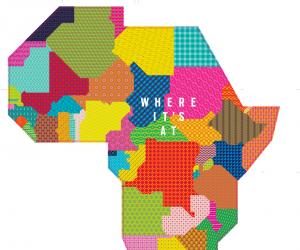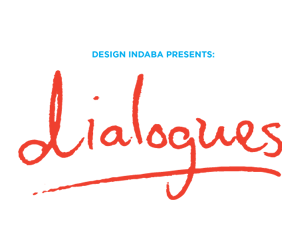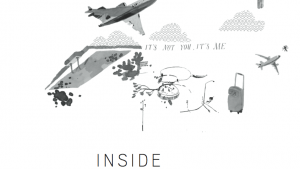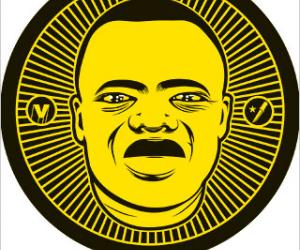Part of the Project
From the Series
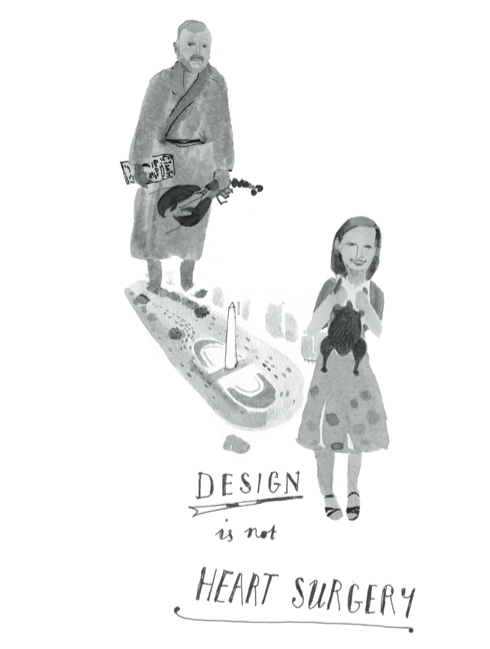
Peet Pienaar: So, Heidi, why did you leave South Africa?
Heidi Chisholm: I didn’t plan to leave, but my husband won a green card and wanted to experience a new culture. You?
Peet: I didn’t really leave. I still have a lot of projects in South Africa and linked to South Africa, but I felt I needed to explore stuff outside and then link it up with stuff happening back home. However, I’ve just moved to Buenos Aires as I feel I have to live here to get more involved and try to make a difference.
Heidi: Can you tell me about some projects that you’re doing that can explain this?
Peet: Toffie design festival is happening both in South Africa and South America, our shops in Cape Town and Buenos Aires stock designers’ work from both countries, and we’ve just developed a magazine called Paris that will be focussing on life in the South (South Africa, Argentina and Brazil).
It seems that your connection to Africa is very important in your work?
Heidi: Yes, Africa is still my main inspiration. I’m involved with a project called Mr Somebody and Mr Nobody. Part art installation and part commercial design endeavour, it’s a collaboration that is a way to tell our emmigrant stories. The products express what it means to be African abroad.
Peet: Will we be seeing your products in South Africa any time soon?
Heidi: We would love to take it to South Africa, but our small-scale production would make it a bit expensive. Hopefully we’ll get things fine-tuned and one day take it to Africa.
Tell me more about Paris.
Peet: The more time I spent in South America, the more I realised how similar we are. We’re all ex-colonial, developing countries with similar problems, climate and location. Paris looks at the South and tries to show that while it’s very different to the North, it’s okay to be down here. It’ll be launched at Toffie at the end of March 2012.
Heidi: Do you have clients in South America? Do you still do work for MTV?
Peet: I’m still doing commercial work for MTV Latin America and Boca Juniors – one needs to pay the bills and find ways to support the love projects.
Heidi: What is local design for you?
Peet: I think South Africans are obsessed with this idea of local. It has a lot to do with fear of an open market in South Africa that has killed many industries and also the search for a unified culture that is South African. But local for me is just being honest in what you’re doing and who you are. Designers ask me why I left and what about “Local is Lekker”. My answer to that is I didn’t leave as much as I went hunting in bigger fields. My local is just bigger now. What is this idea of borders?
I’m local where I feel at home.
How about you? What is local design for you?
Heidi: I think our designers have different influences just like everywhere in the world, so I don’t think one should say this or that is or isn’t South African design.
Peet: How do you feel about people judging you for leaving?
Heidi: I did not leave South Africa by choice – I challenge anyoneto go through what I did and then still have that attitude.
Now that I have a new place where I’m happy, I am trying – through Mr Somebody and Mr Nobody – to give back to South African communities by producing some of our products there.
Have you felt judged?
Peet: I didn’t leave because I felt South Africa is on its way down, I left because I wanted to broaden my playing field and my experience. So I have a clear conscience... we only live once! Do you think it is good for your design to be in New York?
Heidi: Coming here helped me gain some perspective on design and also on what’s happening in South Africa. Being abroad lets you stand back and see things more clearly. Another insight I’ve gained from living here is that there are a lot of good designers out there and we should be supportive of one another and be happy for each other’s good work. People here share and credit whoever needs credit. They have conferences and a lot of it’s free and this way the industry keeps fluid and it feels light. I like that because I think design is not heart surgery – it shouldn’t be taken too seriously.
Peet: I agree. In comparison to people here, South Africans are extremely harsh to each other. If you were to do or say similar things in Argentina, people would oust you as crazy and nobody would touch you. Living in Buenos Aires makes me see South Africa very clearly. When I’m back home I feel cluttered with everyday pettiness. But when I’m here I can see clearly that the biggest challenge for South Africa is education, and I can see what free education does here – you have 30 000 design students in one university in Buenos Aires. The better your marks are, the better the lecturer you get. And many people teach for free because they studied for free
Heidi: Oh, wow, that’s amazing. Here the competition is so incredibly high, people from all over the world want to study in New York. That’s another thing I see in New Yorkers – they don’t complain about hard work and they’re never too sure of themselves because they know there’s always someone better. Maybe that’s why they’re not so mean to each other – they don’t think too much of themselves.
Peet: It’s the same here. Because it’s free, the whole of the Spanish-speaking South studies here. And the standard is so high – you have to do maths as a subject for a two-year design course!
So what would you change in South Africa to make it better in terms of design? (I can already hear people saying, “Keep your advice to yourself.”)
Heidi: I think something like a first Friday could be amazing – once a month, before work, you invite a speaker to share some insight. It could happen at a different agency each month. Oh, and it would be free.
P.P: I’d make education free and block imports to protect local industries. I would put designers on committees to advise on how cities develop. I would make a huge effort to get South African design products on the world stage and form partnerships with Brazil. Get designers to learn a Latin language – Spanish, Portuguese, French or Italian.
Heidi: Just a few small things then?
This conversation was originally commissioned for Where It's At a Design Indaba publication created in collaboration with Richard Hart and disturbance design. View the full series here.

